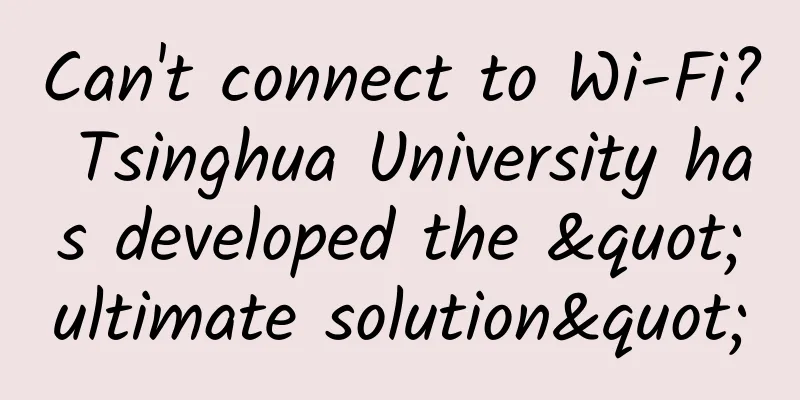Can't connect to Wi-Fi? Tsinghua University has developed the "ultimate solution"

|
While Wi-Fi is one of the greatest inventions of the last century (can anyone dispute that?), it's also one of the most anxiety-inducing technologies.
Can't connect to Wi-Fi? You're not alone. After 400 million attempts to connect, a research team from Tsinghua University says they've found the cause of the failure and have a solution. First, let me introduce the steps of Wi-Fi connection:
The team used an Android software called Wi-Fi Manager, which can record the time taken for each step of connecting to Wi-Fi. They said that according to experimental results, the quality and performance of current Wi-Fi networks are far from satisfactory: 45% of the time, connections fail. In the experiment, the time it took to connect to Wi-Fi varied greatly: 15% of the connections took more than 5 seconds, and 5% took more than 10 seconds. There are many indicators used to judge the quality of Wi-Fi networks, including throughput, latency, etc. However, the probability of successfully connecting to a Wi-Fi node and the time it takes to set up the connection are the important factors affecting the user experience. The researchers also said that although signal strength has a great impact on the connection process, only by understanding how the router works can the problem be truly solved. "We found that while signal strength is important, knowing the patterns of Wi-Fi access points and mobile devices can be a good predictor of how long it will take to establish a connection." Whether the Wi-Fi network was public or private was another important factor. They found that private networks were significantly faster and had a higher success rate in connecting. In addition, the team proposed a way to use AI to improve the success rate of connection: automatic scanning through AI algorithms to find the best network. "Through comprehensive measurements and detailed analysis, we proposed a Wi-Fi access node selection algorithm based on machine learning." “This algorithm uses the characteristics of Wi-Fi access points as input to the machine learning model, and then classifies the candidate access points into two categories: SLOW and FAST. Based on the classification results, our algorithm can avoid mobile devices from connecting to access points that are classified as SLOW.” “Evaluation results show that compared with an algorithm that uses signal strength alone to select access nodes, our algorithm reduces the connection failure rate from 33% to 3.6%, and the connection setup time for 80% of the connections can be reduced by 10 times.” |
<<: 4G+ broadband is advancing rapidly: China Mobile's dual-line network is killing China Unicom
>>: China's communications industry is working together to accelerate the layout of the 5G era
Recommend
Traditional SMS is rising against the trend with the help of 5G. What do you think?
In recent years, it seems that it has become a fa...
BandwagonHost has opened a new data center in Osaka, Japan. It can be interchanged with DC6 (CN2 GIA-E) with a 10% discount.
The latest news is that BandwagonHost has opened ...
The latest progress of LTE-5G deployment in Asia Pacific in July: 24 commercial 5G networks have been launched
Recently, GSA announced the latest progress of LT...
How long will it take for 5G small base stations to "take off"?
In the era of rapid changes in information and co...
Ruijie Networks Creates China's First Wireless Office Wi-Fi for "Medical Innovation Space"
In the "Precision Medicine Baccarat" pu...
EtherNetservers: $12/year-1GB/30GB/2TB/2IP/Los Angeles data center
There are not many merchants who still sell OpenV...
Ministry of Industry and Information Technology: Plans to build 600,000 new 5G base stations in 2021
On January 26, the State Council Information Offi...
Why SDN and IBN Require Better Network Visibility
Intent-based networking (IBN) has been a topic of...
Kafka message sending thread and network communication
[[420379]] Let’s review the message sending seque...
Five reasons why data center liquid cooling is on the rise
Liquid cooling solutions are expected to enter mo...
China Mobile builds the world's largest 5G network
One year after 5G was officially put into commerc...
Four questions to help you understand what DCIM is?
[[126709]] Question 1. What is DCIM? DCIM stands ...
Five ways to establish effective communication in remote teams
The term "remote" itself has a connotat...
How does Netty solve the half-packet and sticky-packet problems?
Netty is a high-performance, asynchronous event-d...
Java Server Model - TCP Connection/Flow Optimization
Usually, our applications do not need to handle t...









